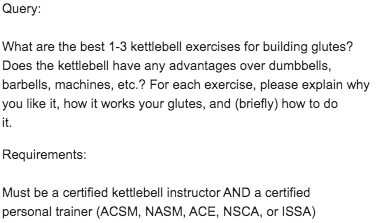Ever wonder how reporters seem to always have an expert they can cite for a story? Whether it’s a quote from a Fortune 500 CEO, a cardiologist, a Tesla owner or someone that collects keychains, reporters seem to always have a source for their stories.
Is it possible that reporters maintain a network large enough to have a subject matter expert on tap for every possible article or broadcast segment? Maintaining a healthy network is certainly vital to a reporter’s job, but, like every industry, software exists to help make a reporter’s job easier. One of those tools is “HARO.”
HARO: What it is
Help a Reporter Out, commonly referred to as HARO, is a service used by journalists to find sources for upcoming stories. The service allows SaaS PR professionals to see what stories journalists are working on and provide responses to requests for commentary.
Out team at BLASTmedia subscribes to receive 2-3 HARO emails each day. These emails contain requests for commentary or interviews with sources on a variety of topics.

For example, the morning edition of the HARO email I received on September 5, 2019, contained 41 requests for experts on topics ranging from Brexit, kettlebell workout routines and bad roommate horror stories.
Requests contain the query, requirements to be considered for inclusion in the article, a deadline for submission and an anonymized email address to which we can pitch our subject matter experts to provide insights and commentary.
HARO: What it is not
Two guidelines for which I always advise my SaaS clients: HARO requests do not result in guaranteed story inclusion and HARO requests are not always legit. I’ll explain.
According to Cision, the owners of the HARO service, more than 800,000 people have signed up to act as a source or as someone, like us, that can facilitate a source for a story. For HAROs asking to speak to the founders or owners of a SaaS business, reporters are likely to receive hundreds (if not thousands) of offers for a source. It is important to keep in mind that just because you’ve submitted for a HARO, there is no guarantee that a reporter will select your subject matter expert.
“HARO requests do not result in guaranteed story inclusion and HARO requests are not always legit.”
Something else to keep in mind is that while there is a vetting process for reporters seeking a source, in our experience, reporters don’t always disclose where content may be published. For instance, someone that writes content for Forbes once or twice a year, but publishes on their Medium blog once or twice a week, may list both Forbes and their blog in the HARO in order to grab attention. This means the work you put forth providing content to someone you thought was a top-tier writer was actually published on an obscure blog. A seasoned SaaS PR professional can sniff out which requests are legitimate and which are not, and which requests will yield impactful media coverage.
Responding to HAROs, like newsjacking and reactive pitching, is an important tactic in a strong media relations effort; however, HAROs are more akin to an editorial calendar than a big-picture media relations strategy. HAROs and editorial calendars are a bit unpredictable and I would not recommend making HAROs a cornerstone of a campaign plan.
That said, HAROs should not be discounted entirely. We’ve had great success inserting clients into national top-tier and trade publication conversations utilizing HARO. Additionally, coverage as a result of a HARO response helps build relationships with reporters. If reporters know that your spokesperson can provide quick and insightful commentary, that reporter is likely to return to the well for commentary on stories in the future, and forgo a HARO request.
If you’re ready — and willing — to insert your company into quickly developing top-tier and trade publication stories, reach out to Lindsey Groepper.




